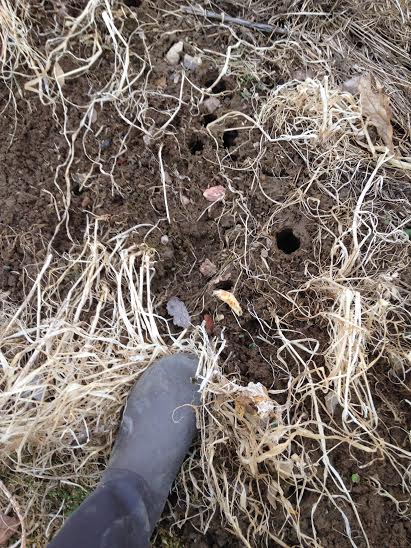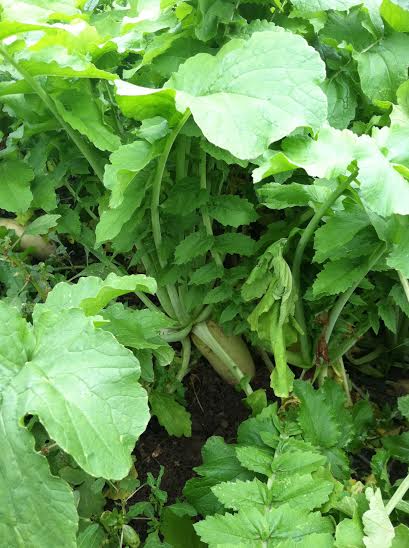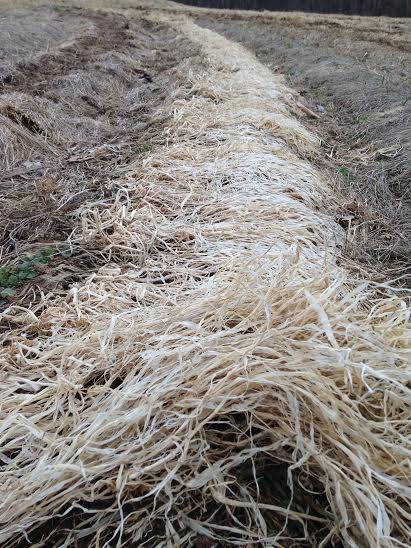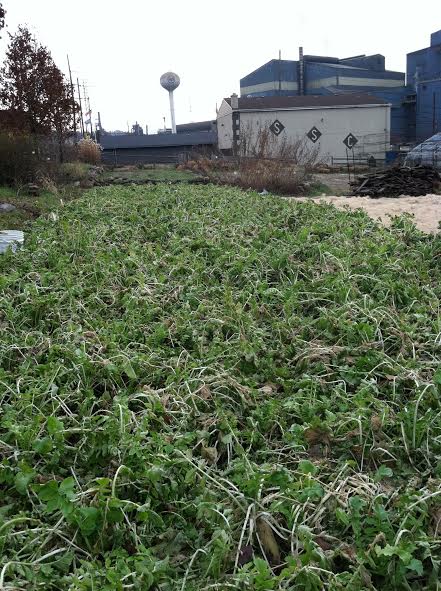Check in weekly, on Wednesdays, to read our new post on gardening, harvesting, and making use of that fine, extra-local produce! We’ll share tips and techniques, gleaned from our urban farms and gardens. Email info@growpittsburgh.org with any topics you’d like us to cover.
You may have heard of cover crops before. They are crops planted for reasons other than providing an edible end result. They are planted to slow erosion, add nutrition and organic matter to the soil, and keep weeds from growing. Some cover crops die in cold weather, while others stay dormant and begin growing again when warm weather returns.
There are several cover crops that make great choices for planting now, in sections of the garden where the food crops are done for the year. We recommend cover crop varieties that winter-kill, rather than hardy crops that will last over the winter. Cover crops that winter kill die back in the cold of winter. The dead plant matter creates a mulch-like mat on top of the soil surface and reduces soil erosion. In the spring, this mat can be easily raked from the top of the soil to reveal a clean and plant-able soil surface.
For best results with winter-kill cover crops, plant in mid-Sept. through early Oct.
Good cover crops that will die in the winter:
- Oats: Planted as a “nurse crop,” oats germinate fairly quickly and provide structure to support other cover crops. When winterkilled they provide a nice mat over the soil surface.
- Field Peas: Peas have the ability to fix Nitrogen from the air. They harbor Nitrogen deposits called rhizomes on their roots. When the plants die in the winter, the Nitrogen stays in the soil for next year’s crops.
- Forage Radishes: These large, quick growing plants produce thick tap roots that break through compacted soil. Over the winter, these roots rot (beware, they can be stinky, come spring), leaving large holes where water can percolate. They are great for building good soil structure.
We find that a mix of cover crops can work great. Toss in a variety of types, depending on your garden’s needs. Look for cover crop seeds at local nurseries or order them online. Seeding rates are often listed for larger acreage – we’ve found that an even sprinkle works well. Seed more heavily if you will be using just one cover crop, and more lightly if you’re planting multiple varieties.

An early spring photo. After raking back the dead cover crop debris, we find large holes left by the forage radishes.



